ReservationSearch and reserve rooms
Click here to confirm, change or cancel your reservation
航空券付きプラン
Shinkansen accommodation plan
提携法人専用予約
2025.07.10
Be enthralled by the delicious Japanese art created by a loving couple
NEIGHBORS
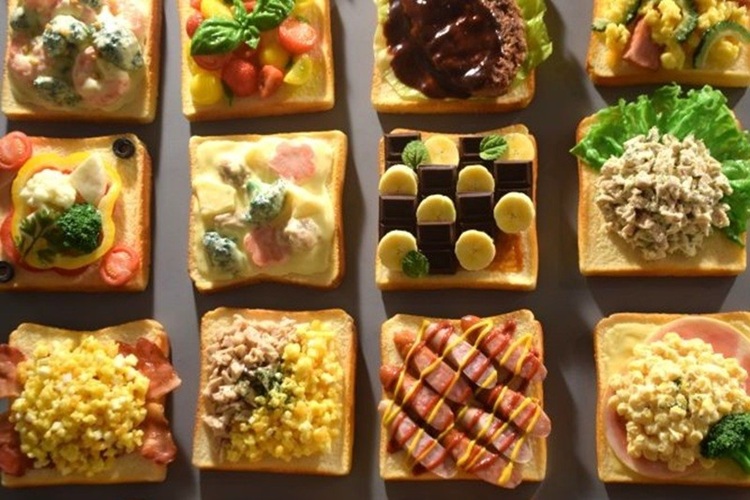
Kappabashi Kitchen Street, located close to RESOL POSHTEL TOKYO ASAKUSA, is where you can find anything related to cooking. Located in the heart of this street is the Ganso Shokuhin Sample Shop, where many tourists come every day to buy and try their hand at making food samples.
Glossy marbled otoro nigiri sushi and crispy shrimp tempura. The freshness of the lettuce, soft-boiled cheese, and fluffy scrambled eggs create a toast arrangement that is almost like art, beautifully showcasing the texture of the ingredients. The store is lined with a variety of dishes that will whet your appetite just by looking at them. They are all so beautifully and intricately finished that you'll almost forget they're made from wax or resin.
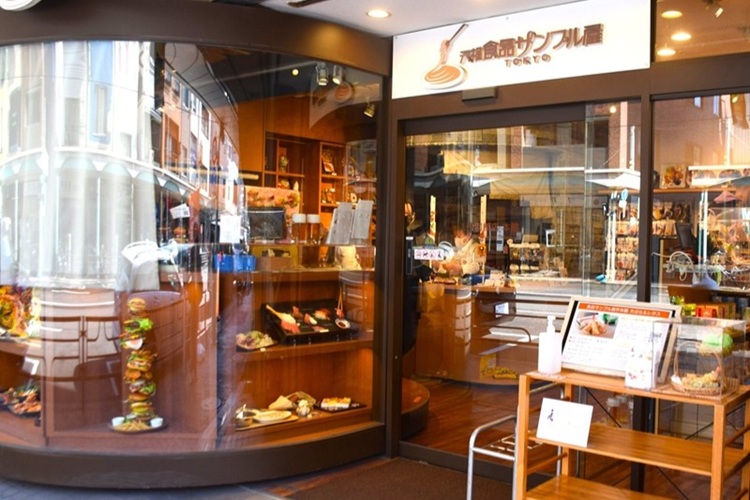
"Food replicas are a culture unique to Japan. Customers from overseas are amazed at how realistic they are, saying, 'Amazing!'" says store manager Sato Kaori.
Iwasaki Co., Ltd., which operates the store, was the first pioneer in Japan to commercialize food replicas in the early Showa period. Food replicas are now featured in Japanese tourist guidebooks and are recognized as a symbol of Japanese culture, but behind their history lies the story of a husband and wife who worked together to develop them.
It all started with a "wax flower" floating on the water surface
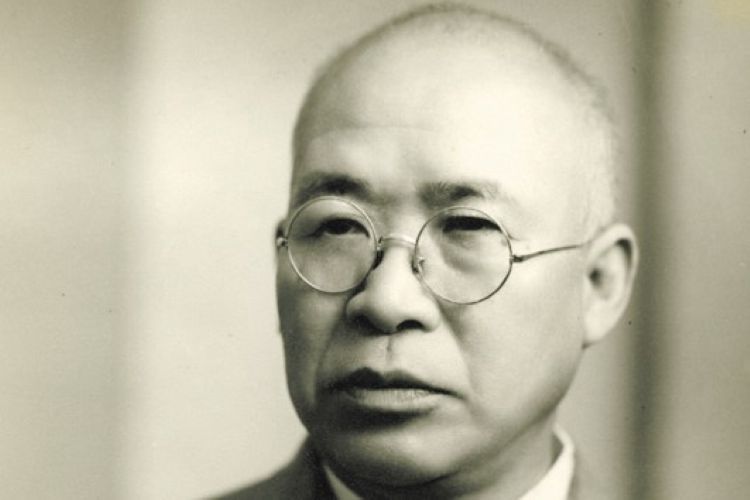
Iwasaki founder, Takizo Iwasaki
The first food replicas appeared in Japan at the end of the Taisho period. At the time, they were called "cooking models" and were simple in color and shape, but Iwasaki founder Takizo Iwasaki was instantly captivated by them.
Takizo recalls being fascinated as a child when he saw candle wax melt and fall into water, spreading out like a soft white flower. He thought about applying the properties of wax to food replicas, and at the age of 36, he began making food replicas.
After returning home from his job at the bento shop, Takuzo would work tirelessly on his research until after 2 a.m. His wife, Suzu, believed in his success and continued to support him. Wax was difficult to work with, and they often failed, cracking or melting, but the two of them never stopped laughing.
It was Suzu who suggested to Takizo, who was struggling with the brittleness of the wax, that they back it with paper. When this idea worked, Takizo was overjoyed, saying, "Suzu, this is like a medal!"
The prototype was modeled after an omelet cooked by his wife.
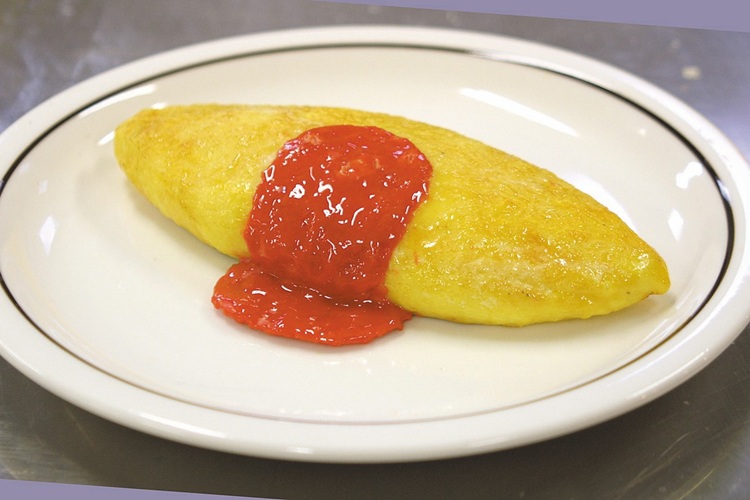
The first prototype food replica, the "Commemorative Omelet"
In 1932, the couple finally completed their first prototype. It was a "Commemorative Omelet" modeled after an omelet that Suzu had baked. Suzu was so overwhelmed by the high level of perfection that he said, "I can't tell which is the real thing..."
"The truth is, Suzu's omelet had wrinkles in the eggs, and it wasn't exactly the best," reveals Hado Ayana, a spokesperson for Ganso Shokuhin Sample-ya. Takizo's faithful reproduction of even the wrinkles made the omelet look even more realistic, she says.
Takizo and Suzu shared a toast together over the commemorative omelet. After that, the prototype was adopted in a department store cafeteria, and food replicas quickly spread throughout the country.
Iwasaki's products, which boast durability and high reproducibility, contributed greatly to the development of the post-war food and beverage industry. In 2011, the first "Ganso Shokuhin Sample-ya" store opened in Kappabashi, a mecca for culinary arts.
"Japan is a country where each region has its own unique food culture and people enjoy cuisine that changes with the seasons. Perhaps it is precisely because of Japan's rich food culture that food replicas have become so popular," says Sato with a smile.
More authentic than the real thing. A belief that has been passed down
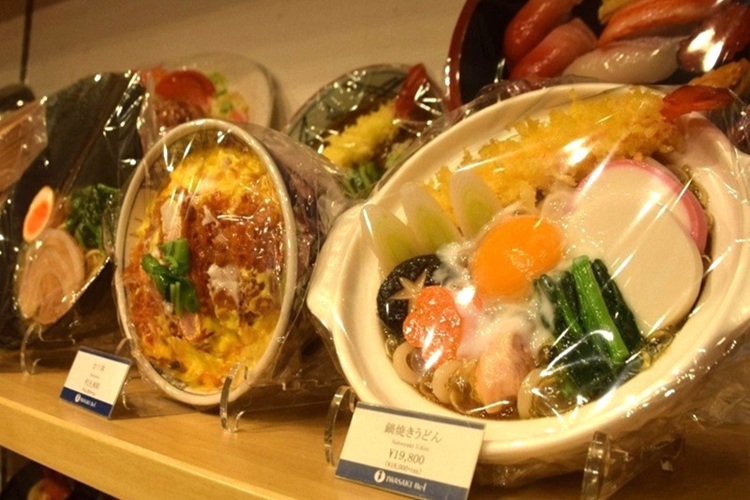
The beauty of the details, such as the texture and browning of fried food, is something that can only be found in Japan, where manufacturing techniques are so advanced.
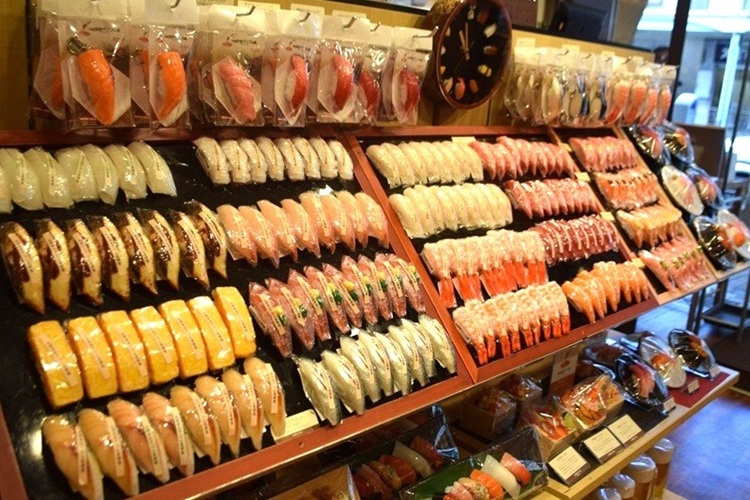
The most popular souvenir is the realistic nigiri sushi magnet.
Expressing the appeal of food in a way that is more realistic than the real thing. This spirit of Takizo has been passed down through the generations, and Iwasaki's food replicas boast the highest quality in the industry.
To make the molds, they use real food delivered from restaurants. For deep-fried foods, which are not possible, they spend days carving styrofoam to create the shape. For dishes that require cooking, such as hamburger steaks and grilled fish, they even calculate the shrinkage and warping of the ingredients, adjusting the size down to the millimeter. To achieve the desired browning level, they mix multiple colorings and do not compromise until they are satisfied with the color.
Sato points out, "Foreigners seem to see them as works of art rather than just models of food," and says that the number of tourists visiting Kappabashi just to admire the food samples is on the rise.
"Kappabashi is a town with deep ties (to Iwasaki). I'm glad that the shopping district has come together to enliven Kappabashi."
Beyond the shop window: evolving into a tool that brings smiles
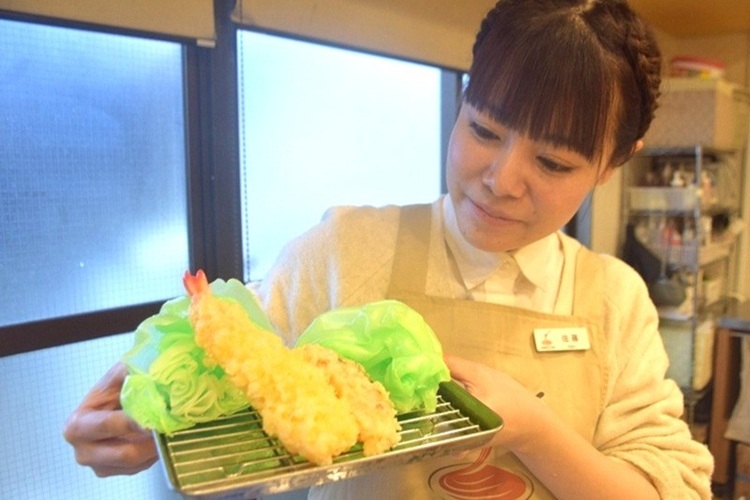
"The lettuce and tempura making experiences are very popular," says Sato.
It has been 93 years since the birth of the commemorative omelet. The mission of "Ganso Food Sample Shop" is to "bring food replicas out of the show window and provide surprise and excitement."
One of these is the crafting experience that has been held since the store opened. Participants come from a wide range of nationalities and ages, but Sato says he is particularly touched by the sight of adults having fun and rediscovering their childhood.
"It makes me happy to see the children shout in surprise and laugh with their friends. It's not often that adults get so excited." He says he finds great satisfaction in knowing that the replica foods are bringing smiles to people's faces.

Developing a series of unique products, including meat bags and "Beef R Code"
In recent years, in addition to standard items such as key chains and magnets, they have been coming up with a variety of playful products. Pizza hats and meat handbags have become popular on social media and have become popular photo spots. What's surprising is that the "Beef R Code," a QR code embedded in beef, can actually be read.
"Even if you don't speak the same language, everyone can't help but smile. I want this to be the kind of store I want to be."
Food samples brought to the world by a loving couple. Japan's ever-evolving "delicious art" has captured the hearts of people all over the world.
元祖食品サンプル屋 合羽橋店
電話:0120-17-1839(フリーダイヤル)
住所:東京都台東区西浅草3-7-6*合羽橋交差点近く
アクセス:つくばエクスプレス「浅草駅」 A2出口徒歩5分
*東武線および地下鉄の「浅草駅」と異なります
東京メトロ銀座線「田原町駅」3番出口徒歩12分
東京メトロ日比谷線「入谷駅」1番出口徒歩15分
HP:https://www.ganso-sample.com/
SNS:https://www.instagram.com/ganso_sample/
https://x.com/ganso_sample
*営業時間や定休日についての詳細は上記のリンク先にてご確認ください。




